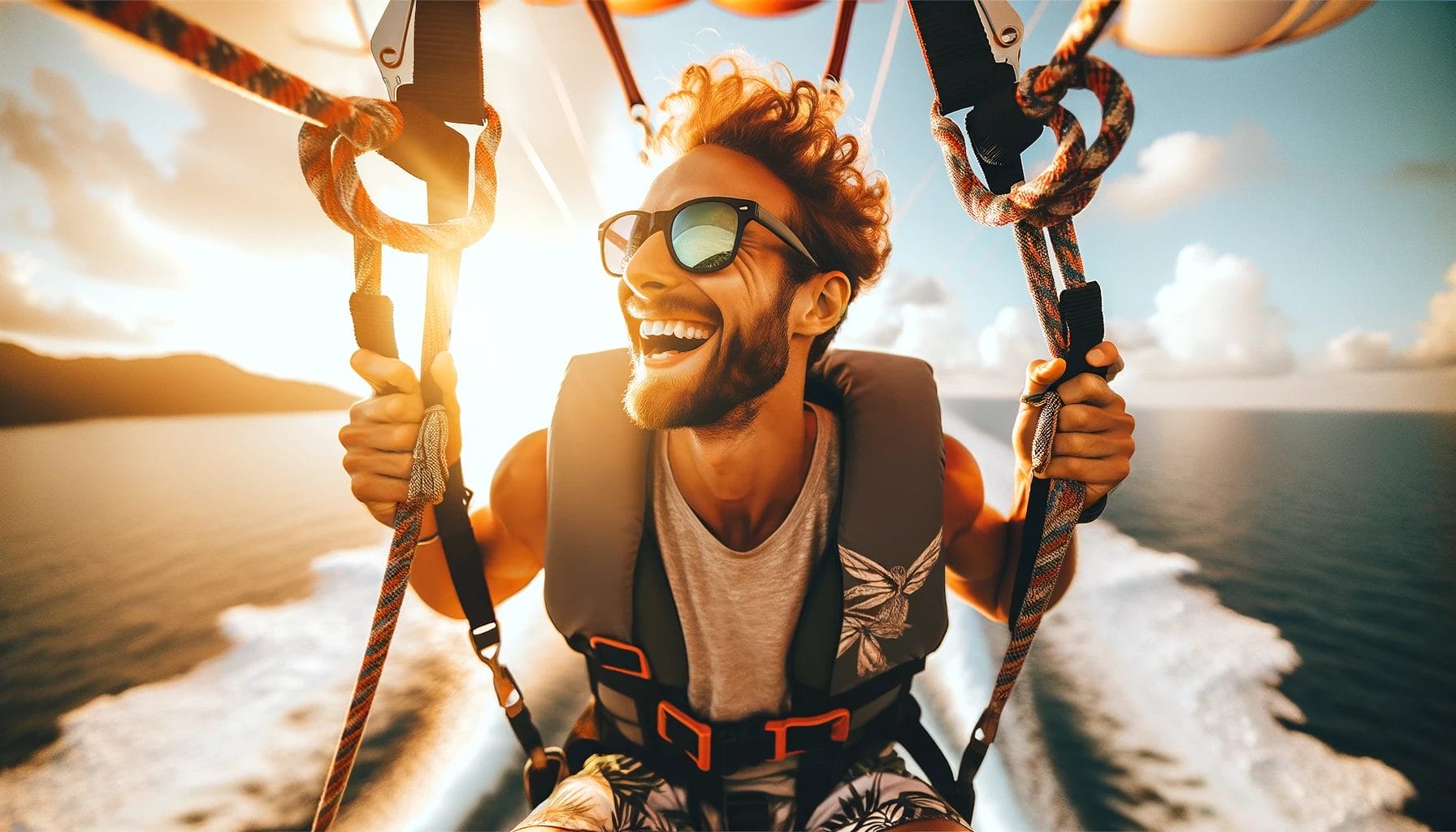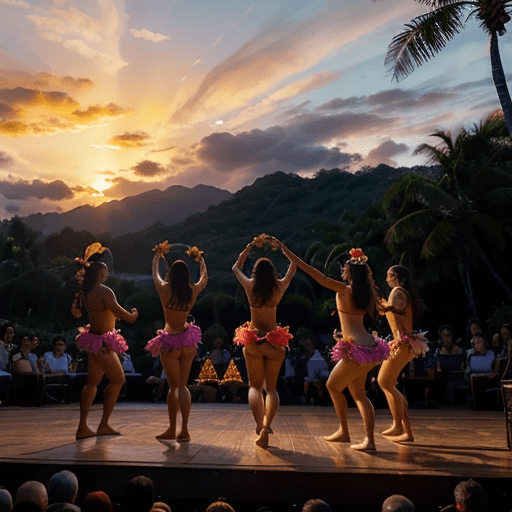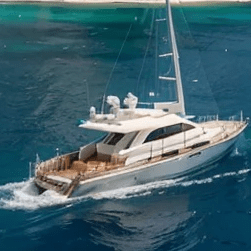Hawaii – the very name conjures up images of turquoise waters, golden sands, and lush tropical forests.
But how can one ensure they’re safe while enjoying this paradise?
Let’s dive into Hawaii Beach Safety!
Hawaii’s Beaches

The Allure of Hawaii’s Sandy Shores
Aloha! The Hawaiian archipelago, with its breathtaking landscapes and balmy breezes, has charmed its way into the hearts of countless souls.
For an outgoing spirit with a penchant for travel and adventure, Hawaii is more than just a destination—it’s an experience, an emotion.
Have you ever dreamed of surfing the perfect wave, its crest glistening under the tropical sun, while the rhythmic chants of a distant luau set the backdrop?
Or perhaps, imagined tracing the footsteps of ancient Hawaiian royalty through hidden beach trails, with every turn revealing yet another secluded cove or a secret waterfall?
And who can resist the hypnotic dance of Waikiki’s palm trees, as they sway in harmony with the gentle strumming of a ukulele?
It’s undeniable: Hawaii’s beaches are a symphony of experiences, a melting pot of cultural treasures, and nature’s marvels.
From sun-kissed mornings where the horizon paints a masterpiece of oranges and purples to starry nights where the Milky Way seems just an arm’s reach away, Hawaii promises a paradise like no other.
But, much like every dream, there’s a flip side.
Importance of Hawaii Beach Safety
As the sun glistens on the clear blue waters, and the inviting waves beckon, it’s easy to forget that nature, while beautiful, is also powerful and unpredictable.
Those same waves that surfers crave can become treacherous riptides.
The serene beaches, which offer solace and relaxation, can transform with the changing tides.
While the thought of dipping your toes into the Pacific and letting the ocean waves playfully crash around you is undeniably tempting, it comes with a responsibility—a responsibility to respect the ocean’s might, to understand its moods, and to be ever vigilant.
Plan Your Hawaiian Adventure Today
Camper Vans | Surf Boards | Kayaks | Snorkel Gear | Itineraries | Campsites | More…
Safety isn’t merely a guideline; it’s a commitment.
A commitment to oneself, to loved ones, and to the very essence of the Hawaiian spirit.
After all, as the locals say, “Malama i ka wai” – cherish the water.
So, while it might sound a tad dramatic to equate beach fun with danger, it’s an essential realization.
Because a dream, no matter how beautiful, is best lived with both feet firmly planted in the sands of reality.
Understanding the Ocean’s Power

The Might of the Pacific Ocean
Ah, the vast Pacific Ocean! Spanning more than 60 million square miles, it’s the largest and deepest of Earth’s oceanic divisions.
The Pacific is not just a massive body of water; it’s a living entity, a witness to Earth’s history, and a force to be reckoned with.
Have you ever stood on the edge of a Hawaiian beach, letting the waves crash onto your feet, and felt that raw, untamed energy?
That’s the Pacific speaking to you.
Every wave carries stories from distant shores, ancient marine tales, and the whispered secrets of the deep abyss.
But, this majestic ocean also houses currents that are as swift as they are stealthy, and tides that can change as unpredictably as the winds.
The very waves that offer the thrill of surfing can turn into powerful undertows in a heartbeat.
As someone who loves adventure and the adrenaline rush, it’s crucial to understand that with the Pacific, it’s always a mix of awe and caution.
For those trying to blend the excitement of a Hawaiian adventure with the realities of daily life and responsibilities, it’s essential to realize that the ocean isn’t just a backdrop for your vacation selfies.
It’s a force, wild and untamed.
Much like you wouldn’t approach a wild animal without caution, the Pacific too deserves that reverence.
Recognizing Hawaii Beach Safety Signs

Beach signs – those colorful boards that often get overshadowed by the allure of glistening sands and azure waters.
But have you ever stopped to wonder why they’re placed prominently at almost every beach entrance?
These signs are the silent guardians of the shores.
Each symbol, every warning, and every guideline is a message from those who know the ocean best.
They aren’t mere advisories; they are, in fact, the distilled wisdom of lifeguards, locals, and those who’ve experienced the ocean’s many moods.
Plan Your Hawaiian Adventure Today
Camper Vans | Surf Boards | Kayaks | Snorkel Gear | Itineraries | Campsites | More…
You wouldn’t book a hotel without checking its reviews, right?
In the same vein, ignoring beach signs is like disregarding valuable advice.
They’re not just informative; they’re lifesaving.
Each sign, with its pictograms and words, is trying to have a conversation, giving you a heads-up about potential hazards, and ensuring your Hawaiian beach experience is both memorable and safe.
So next time, before you spread that beach towel or take that plunge, pause for a moment.
Read the signs, respect their message, and let the ocean’s Yelp reviews guide you to safety!
Essential Hawaii Beach Safety Tips
Alright, enough with the warnings.
Let’s get to the heart of it.
Here are the tips you absolutely need to know!
Tip 1: Know Your Swimming Limit

Ah, the joy of plunging into the ocean’s embrace!
The sheer exhilaration of feeling the water buoy you up as you float, swim, or just play around.
But here’s the thing: much like any other skill, swimming has its grades, and the ocean isn’t the place to test uncharted waters.
You see, swimming in a pool, with its calm and predictable environment, is worlds apart from navigating the ocean’s dynamic currents.
The ocean has its rhythms, its ebb, and flow, and sometimes, a calm surface can mask strong undercurrents beneath.
Think of it like cooking.
Just because you can whip up a delicious home-cooked meal doesn’t mean you’re ready to helm a five-star restaurant kitchen during peak hours, right?
Knowing your limits isn’t a sign of weakness; it’s a badge of wisdom.
It means you respect the ocean enough to acknowledge its might.
So, while that adventurous spirit is commendable, a bit of self-awareness goes a long way.
If you’re new to swimming, or if the vast expanse of the ocean intimidates you, stay close to the shore.
Or better yet, consider taking a local swimming class to brush up on your skills.
Remember, every wave is a story, and you’d want yours to be a happy one.
Tip 2: Pay Attention to Warning Flags

Imagine you’re shopping online, and you come across a product with a slew of 1-star reviews and warning comments.
Would you buy it? Probably not.
Now, let’s transpose that scenario to the beach.
Those colorful flags fluttering in the breeze are the ocean’s reviews, and they’re telling you in no uncertain terms what to expect.
Each flag color corresponds to a specific warning.
A red flag, for instance, is the ocean’s way of saying, “Hold on, buddy! Today’s not the day.”
It could signify strong currents, high surf, or other hazardous conditions.
Ignoring it is akin to disregarding a ‘Beware of the Dog’ sign and jumping into a yard – not the best idea.
On the other hand, a green flag gives you a thumbs-up, signaling that it’s relatively safe to swim.
Yellow? Be cautious.
It’s the ocean’s way of reminding you to stay alert and vigilant.
In essence, these flags are a beachgoer’s cheat sheet, a quick reference guide to what the waters hold in store.
Lifeguards and local authorities put them up based on real-time observations and in-depth knowledge of the region.
So, when you see them, take a moment, understand their message, and let them guide your beach activities for the day.
After all, safety first, right?
Plan Your Hawaiian Adventure Today
Camper Vans | Surf Boards | Kayaks | Snorkel Gear | Itineraries | Campsites | More…
Tip 3: Steer Clear of Remote Beaches

The allure of a secluded Hawaiian beach, untouched by throngs of tourists, with nothing but the symphony of waves to keep you company, can be incredibly tempting.
And in the age of Instagram, a photograph at a lesser-known spot can feel like a trophy.
But when it comes to Hawaii beach safety, it’s essential to weigh the pros against the cons.
Remote beaches might promise tranquility, but they also come with inherent risks.
For one, fewer people mean fewer eyes watching out for potential dangers or unexpected situations.
Suppose you run into trouble, whether it’s an injury or getting caught in a tricky current.
In that case, the chances of immediate assistance on a deserted beach are significantly lower.
When planning your Hawaiian adventures, it’s a good rule of thumb to prioritize safety over secrecy.
Sure, a hidden alcove sounds enchanting, but if it’s too remote, it might be better left unexplored.
There’s a fine line between discovering a hidden gem and stepping into a potential hazard.
So, as you hunt for that perfect beach spot, always keep Hawaii safety at the forefront of your decisions.
Tip 4: Always Have A Buddy

Travel memories are best when shared, don’t you think?
Whether you’re diving into the azure waters, building sandcastles, or simply soaking in the sun, having a companion by your side amplifies the experience.
But beyond the fun and camaraderie, there’s a vital Hawaii beach safety reason to always have a buddy: it’s safer.
Just as you’d think twice before hiking a mountain trail alone, the same principle applies to the ocean.
Even the most experienced swimmers can face unforeseen situations, and in such moments, having a buddy can be a lifesaver—literally.
Swimming with a companion ensures that someone’s got your back, can call for help if needed, or even lend a hand in a tricky situation.
Plus, let’s face it: laughing over a surprise wave splash or sharing a sunset view is infinitely better when you’re not alone.
So, for memories and safety alike, always swim with a buddy.
Tip 5: Beware of Rip Currents

Anyone familiar with beach safety, especially in Hawaii, knows about rip currents.
But let’s set the record straight.
These powerful currents, which can pull swimmers away from the shore, are among the top beach hazards globally.
A quick glance at Hawaii safety reviews, and you’ll find countless mentions of them.
Plan Your Hawaiian Adventure Today
Camper Vans | Surf Boards | Kayaks | Snorkel Gear | Itineraries | Campsites | More…
Rip currents can form in any large open water area, but they’re especially prevalent in places like Hawaii, where the ocean’s power is palpable.
Now, if you ever find yourself caught in one, your first instinct might be to panic or swim directly back to shore.
Resist that urge!
Instead, remember the golden rule: swim parallel to the shore until you’re out of the current.
Fighting a rip current head-on is not just exhausting but can also be dangerous.
Trust in your swimming skills, stay calm, and swim sideways.
Once out of the rip, making your way back to the shore becomes considerably easier.
So, as you relish the Hawaiian waters, always stay alert.
Knowledge, after all, is the first step to Hawaii beach safety.
Tip 6: Be Cautious of Wildlife

Hawaii is undeniably a treasure trove of biodiversity, both on land and beneath the waves.
From the majestic green sea turtles (honu) to the playful spinner dolphins, the Hawaiian waters are teeming with life.
And as much as these creatures add to the enchantment of your Hawaiian beach experience, it’s crucial to remember the Hawaii beach safety principle: observe, don’t disturb.
When snorkeling or swimming, it’s natural to be excited upon spotting wildlife.
However, always maintain a safe distance.
Not just for your safety, but for the well-being of these animals.
Think of it this way: imagine a stranger suddenly invading your living room.
Unsettling, right?
The same applies to these creatures in their natural habitat.
Moreover, some marine animals, like jellyfish, can pose risks.
A brush against certain species can lead to painful stings.
As you scour through Hawaii safety tips, it’s evident that respecting marine life isn’t just an environmental or ethical responsibility; it’s also a matter of personal safety.
So, as you dive into the depths or wade in the shallows, always remember that you’re a guest in the vast oceanic realm.
Treat its inhabitants with the respect they deserve.
Tip 7: Stay Hydrated and Protected from the Sun

A sun-kissed glow might be the coveted souvenir from your Hawaiian getaway, especially if you’re keen on showcasing it on your travel blog.
But here’s a nugget of Hawaii beach safety wisdom: the tropical sun is not your typical sunshine.
Hawaii, with its near-equatorial location, has stronger UV rays.
And while lounging on the beach might feel heavenly, prolonged exposure can lead to sunburns, or worse, heat-related illnesses.
Thus, never underestimate the power of a good SPF sunscreen.
Think of it as your shield against the Hawaiian sun – protective and indispensable.
But sun protection doesn’t end with sunscreen.
Hydration is your next best friend.
The warm tropical weather, combined with salty sea water, can dehydrate you faster than you realize.
And no, sipping on that delightful Mai Tai doesn’t count!
Always have fresh water on hand.
Regular hydration ensures that your body remains cool, you fend off heat-related issues, and you stay energized to make the most of your Hawaiian adventure.
Plan Your Hawaiian Adventure Today
Camper Vans | Surf Boards | Kayaks | Snorkel Gear | Itineraries | Campsites | More…
Tip 8: Avoid Alcohol While Swimming

Speaking of cocktails, they’re a staple of the Hawaiian beach experience.
Who doesn’t dream of enjoying a tropical drink as the sun sets over the Pacific?
But here’s a critical Hawaii safety tip: save the booze for after the swim.
Alcohol can impair judgment, reduce coordination, and alter your body’s response to changes in temperature.
In the context of the beach, this could translate to misjudging the strength of waves, swimming beyond safe limits, or not recognizing the onset of hypothermia or heatstroke.
The ocean, in all its grandeur, demands respect and alertness.
Introducing alcohol to the mix is a recipe for potential disaster.
As the saying goes, “It’s better to be safe than sorry.”
Enjoy the ocean in all its might, and later, raise a toast at the beach bar or the luau, celebrating another beautiful day in paradise.
Tip 9: Learn Basic Lifesaving Skills
Diving into the Hawaiian waters is akin to entering an exhilarating world of blue expanses.
But as with every adventure, there’s always a flip side.
The unpredictability of the ocean can sometimes catch even the most seasoned swimmers off-guard.
That’s where basic lifesaving skills come into play.

Just like you’d pack an extra camera battery for those unforeseen photographic moments, knowing some emergency rescue techniques is invaluable for those just-in-case scenarios.
From understanding how to spot someone in distress to knowing CPR or how to assist a choking individual, these skills can be a game-changer.
Numerous Hawaii safety workshops and training sessions focus on imparting these vital skills.
Investing some time in acquiring them not only ensures your safety but might also make the difference in a life-threatening situation for someone else.
After all, isn’t it better to be over-prepared than caught off guard?
Tip 10: Don’t Turn Your Back to the Ocean

For avid shoppers, there’s nothing quite as frustrating as seeing a hefty discount pop up right after paying the full price for an item.
In the realm of Hawaii beach safety, a comparable analogy would be the unpredictability of the ocean.
One moment it’s calm, and the next, a rogue wave can come crashing.
Always being alert and facing the waves reduces the chance of being taken by surprise.
A sudden strong wave can knock you off balance, pull you into deeper waters, or even result in injuries from being thrown against rocks or hard sand.
Just as you’d stay updated on deals to avoid the disappointment of missing out, always keep an eye on the ocean.
It’s a simple step, but it can go a long way in ensuring your safety.
Plan Your Hawaiian Adventure Today
Camper Vans | Surf Boards | Kayaks | Snorkel Gear | Itineraries | Campsites | More…
Tip 11: Keep Children Within Arm’s Reach
Our main demographic might not have children, but sharing knowledge is always a boon, right?
For those who have little ones or might be traveling with family members who do, this Hawaii safety tip is golden: always keep children within arm’s reach.
Kids, with their boundless energy and curiosity, can easily get distracted and wander off into deeper waters or potential danger zones.

By ensuring they’re always close by, not only do you reduce potential risks but also foster a secure environment for them to enjoy the beauty of Hawaii’s beaches.
Because, in the end, a day at the beach should be filled with joyous memories, not worrisome incidents.
Tip 12: Use Approved Beach Equipment
Budgeting and saving is wise, especially for our demographic that values authentic experiences over splurging.
However, when it comes to Hawaii beach safety, skimping on equipment isn’t the place to cut corners.
Whether it’s snorkeling gear, flotation devices, or even sunshades, always opt for approved and reliable equipment.

That discounted inflatable might seem like a steal, but if it’s not durable or fails to meet safety standards, the risks outweigh the savings.
Just as you’d research before investing in travel-related items, take the time to ensure your beach equipment is up to par.
Because, in the end, no amount of savings can compensate for compromised safety.
Planning Your Unique Oahu Adventure
With the sun setting in hues of orange and pink, reflecting its gleam on the vast expanse of the Pacific, Oahu is an island that doesn’t just offer beaches; it presents adventures.
And for someone like you, with an insatiable hunger for experiences that are as authentic as they are memorable, there’s no limit to the adventures that await.
Speaking from personal experience, one of the most transformative and exhilarating ways I embraced Oahu was by renting a camper van.
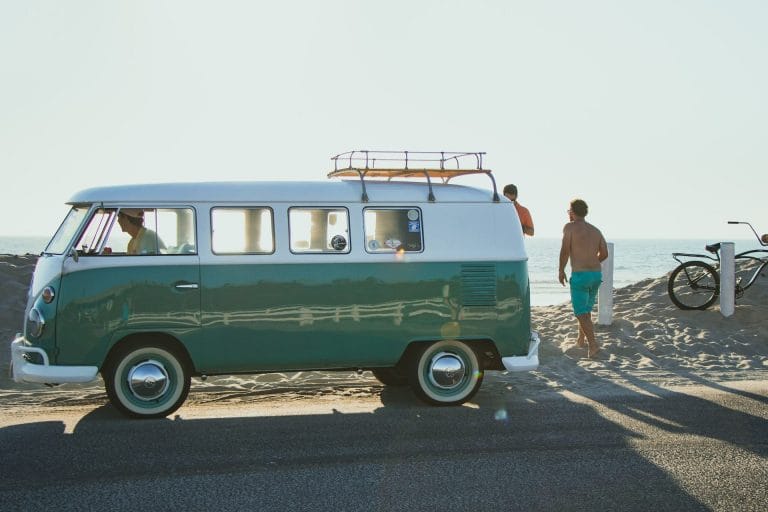
Imagine this: waking up to the sound of waves gently lapping at the shore, the first rays of the sun glistening on your face, and the freedom to drive and discover secluded spots on a whim.
The camper van experience allowed me to truly immerse myself in Oahu’s natural splendor while maintaining a sense of intimacy and convenience.
Always ensure that the camper van you rent meets all Hawaii safety regulations, is in top-notch condition, and comes with all necessary amenities.
Remember, the essence of adventure doesn’t lie in unpredictability but in preparedness.
Have you been dreaming of riding the waves at Waikiki?
Go for it, but perhaps start with a surfing lesson from a local instructor to get the basics down.
Plan Your Hawaiian Adventure Today
Camper Vans | Surf Boards | Kayaks | Snorkel Gear | Itineraries | Campsites | More…
Eager to relish the authentic Hawaiian cuisines?
Instead of hitting the tourist traps, ask the locals.
They’re often more than happy to point you towards their favorite haunts, ensuring you get a taste of real Hawaiian flavors.
Every beach, every trail, every local eatery in Oahu has a story to tell.
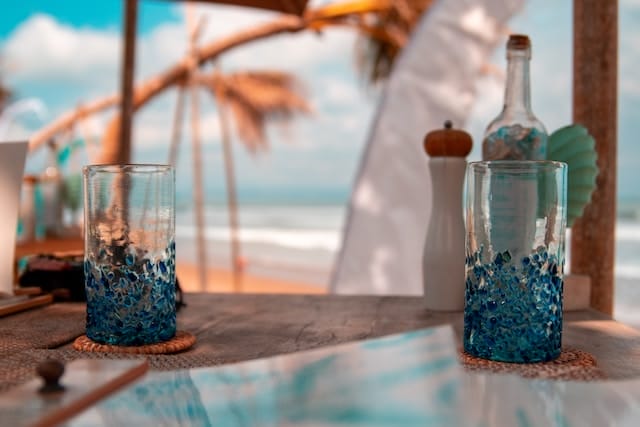
And with these Hawaii beach safety tips in hand, you’re not just prepared to listen but to be a part of those tales.
So, as you lay down the blueprint of your Oahu adventure, always remember the golden rule: chase the thrill but put safety at the forefront.
After all, the best adventures are those that are cherished, not regretted.
Let us know in the comments your top Beach Safety Tips!
Hawaii Beach Safety FAQs
Major beaches usually have lifeguards, but always check beforehand.
Not all, but major touristy beaches often do.
Summer usually has calmer waters on the south shores.
No, always consult local surf shops or lifeguards for beginner-friendly spots.
Consider checking Hawaii’s official tourism website or local lifeguard stations.


